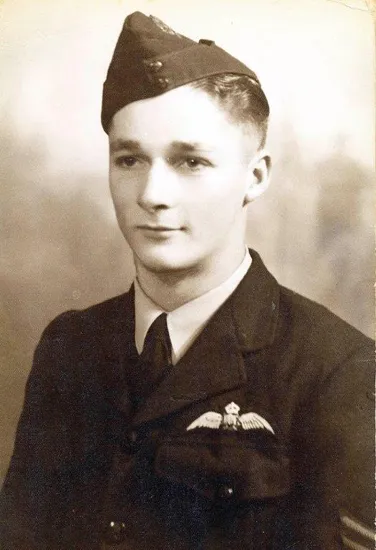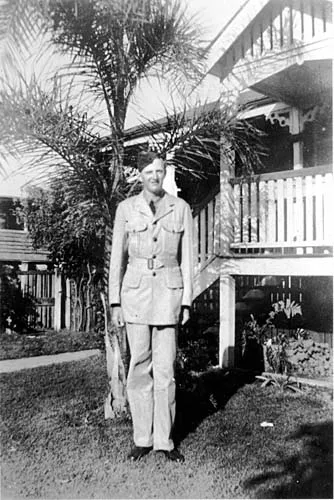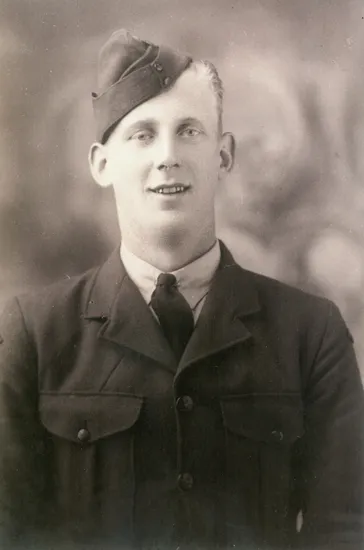Commemoration of the Air Force 100 years – Our local flying heroes

James 'Jim' Hocking was born in Nambour as the second child of William and Eva Hocking's five children. When war was declared in 1939, three Hocking boys were ready to sign up. As soon as Jim turned 18, he enlisted with the Citizens Military Forces before being discharged after four months to take up acceptance in the Royal Australian Air Force in 1942.
He was sent to England to train on the heavy bombers of the RAF during World War Two. On July 28, 1944, the 21-year-old RAAF pilot was flying a Stirling Bomber or “flying coffin” during a final training run before heading into battle.
The engine caught fire as he approached the village of March in the Fenland region of the UK. Ordering the crew of six to jump for their lives, Jim remained at the controls manoeuvring the plane away from the town of March.
His courageous sacrifice meant the fuel laden plane plunged into a field about a kilometre from the town saving many lives. He had saved the town but lost his life.
He is buried in Cambridge Cemetery far from Australia where the inscription on his headstone reads, 'Nobly he lived. Nobly he died. Remembered.'
In 1987, residents of the town of March gathered to honour this remarkable man they had never met. There is a memorial to him at March's St Wendreda's Church and a permanent display about his life in the town's museum.
In 2016 Jim Hocking was awarded posthumous the Star of Courage the second highest decoration for Australian bravery.
Although his heroism went largely unknown for 42 years, his bravery resulted in the Sister City agreement between England’s Fenland District Council and the Maroochy Shire Council in 1997.

Pilot Officer Jim Hocking of Nambour, ca 1940
Copies of the book “March Hero” by Dot Wittington are available for loan from the Local Studies Collection, Heritage Library, Sunshine Coast Libraries
Graham Charles Nichols was one of three sons of Ernest and Jane Nichols, who enlisted during World War II. He was born in 1922 at Cambroon, where his family had taken up 320 acres and established a dairy. Graham enlisted for service on 31 March 1941 and served as a Flight Sergeant with the Royal Australian Air Force. He was killed in action on 28 April 1943 while posted with the Base Torpedo Unit.

Graham Charles Nichols in Air Force uniform, 1942
William (Bill) Robinson joined the Royal Australian Air Force as a photographer in 1941, and was posted in Australia and overseas during his five years of service.
While based in Newcastle he took the first aerial flashlight photographs at night. At the end of the war he married Phyllis Breadman, a W.R.A.A.F. photographer, and together they established a photographic studio. In 1950 they moved to Nambour where they started a branch studio. Bill also worked as a freelance photographer taking photographs for both the Nambour Chronicle and the Nambour Police Force.

William Herbert Robinson in Air Force uniform, ca 1942
Ernest Heath enlisted for service with the Royal Australian Air Force on 11 May 1942. Ernest held the rank of Leading Aircraftman and served (Service no. 75630) at the Richmond Air Base, New South Wales and at the Darwin Air Base. He was posted with the 43 Squadron at the time of his discharge on 14 December 1945.

Ernest Heath in Royal Australian Air Force uniform, World War II, ca 1942
Cecil Wilson was the son of John and Margaret Wilson (nee Lou) of Ilkley and was residing in the Eudlo area when he enlisted for service with the Royal Australian Air Force on 30 June 1943. He was trained in New South Wales and served (Service no. 150039) in New Guinea, attaining the rank of Aircraftman 1 in the 4th Wireless Unit. On his discharge on 5 April 1945, Cecil returned to Eudlo and worked with his brothers in the timber industry.

Cecil Arthur Wilson in Royal Australian Air Force uniform, World War II
Thanks to Sunshine Coast Council’s Heritage Library Officers for the words and Picture Sunshine Coast for the images.